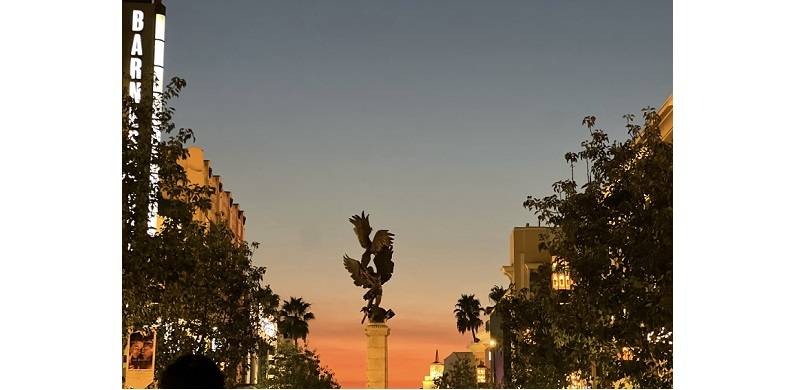
An opportunity came to spend three days in LA and it was hard to pass. But what would I do in those three days? I had been going to LA since 1978, for pleasure and for business. I had visited Disneyland, Universal Studios in Hollywood, and other theme parks countless times. Their charm had worn off. I had attended conferences in several major hotels and was not anxious to stay in them.
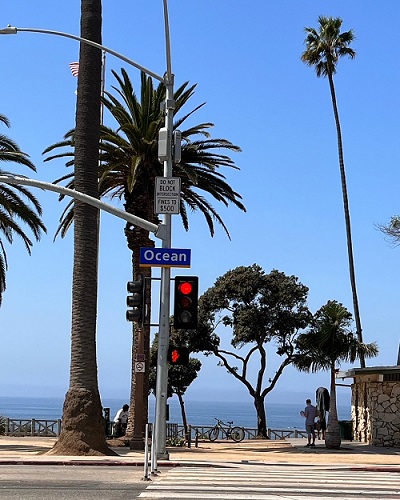
And during my trip to LA in 2003, I had attended not one but two functions at which Pervez Musharraf spoke. The first function was a breakfast with American businessmen at a fancy hotel located off the Avenue of the Stars, where he made an appeal for investing in Pakistan. The second was a dinner with some 500 Pakistani couples in the swank Beverly Hills Hotel where he tried to convince the room that he was the best thing that ever happened to Pakistan since Jinnah.
On this trip, I did something totally different and stayed at a two-story boutique hotel in Beverly Hills. We visited three of the top five museums in the city: the Los Angeles County Museum of Art, LACMA, the Academy Museum, and the Getty Center.
At the entrance to LACMA there is a collection of some 200 really old cast-iron street lamps. Once upon a time, they must have been located all around town. Restored to working order, they now stood next to each other. The collection, called “Urban Light,” is one of LA’s prominent landmarks. It is lit up at night.
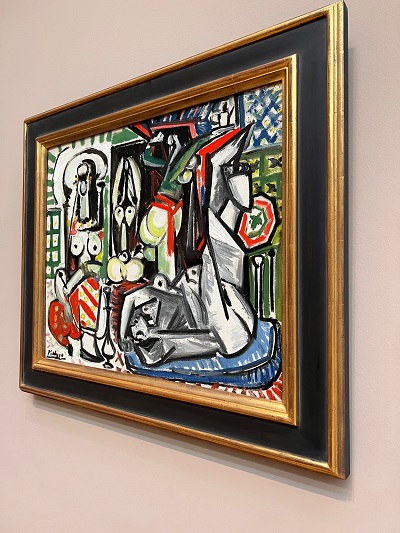 Inside, we discovered a wide range of modernist masterpieces, large-scale sculptures, and traditional Japanese screens. There was an impressive collection of Spanish American art from the 1500-1800 period. Some of the paintings had a distinctive religious theme. In particular, one stood out. This was a monumental painting by the Bolivian painter Melchor Perez Holguin, entitled the “Golden Brush.” It invokes piety as it depicts Christ after the crucifixion.
Inside, we discovered a wide range of modernist masterpieces, large-scale sculptures, and traditional Japanese screens. There was an impressive collection of Spanish American art from the 1500-1800 period. Some of the paintings had a distinctive religious theme. In particular, one stood out. This was a monumental painting by the Bolivian painter Melchor Perez Holguin, entitled the “Golden Brush.” It invokes piety as it depicts Christ after the crucifixion.
The Academy is adjacent to LACMA. It has several floors of exhibits, featuring objects from iconic films such as Crouching Tiger, Hidden Dragon; Jaws; Star Wars; Terminator; and the Wizard of Oz. In several rooms, you can watch clips from selected movies. You can also actually hold an Oscar.
In one room, they show you how stunts are performed. Earlier, in one of those coincidences that come rarely in life, we were checking out a cottage in West Hollywood when the owner introduced himself as a “stunt double.” He was tall, sturdy and agile. I could easily see him performing those roles.
The Getty Center is not the easiest place to get to. It sits atop a mountain. After we had parked, we took a train. As we emerged from the train, we saw a remarkable complex of travertine and white-clad pavilions. They housed the collections.
The collections included ornate French furniture, mannequins featuring fashions from several continents – including women in Western attire featuring the Turkish flag – and a wide array of paintings. As we came out of the buildings, truly amazing gardens with mazes, canals and fountains swung into view. Blooms of different colour added nuance, texture, depth and intrigue.
The Getty Center also provides an unexpected bonus: a 360-degree view of the hills, the ocean, and downtown LA. In the distance looms a multi-lane freeway, looking like a dynamic work of art with traffic moving slowly in both directions.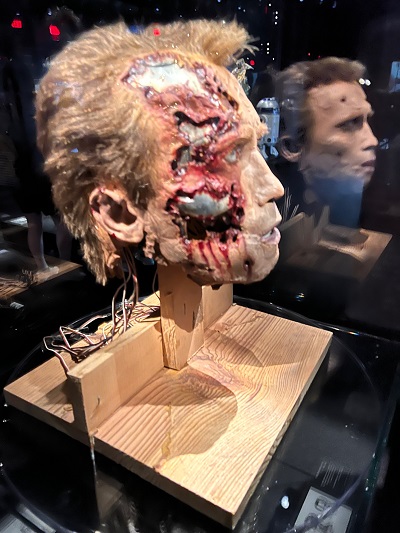
On the third day, we spent time admiring the beach at Santa Monica. In the distance, on a pier, kids were enjoying all types of rides, taking us down memory lane.
During the three days, we made time to savour some fine cuisine in Santa Monica, West Hollywood and Beverly Hills. No visit to LA would be complete without visiting at least one shopping mall. We went to one open-air mall, The Grove, which also gave us an opportunity to have dinner besides a lit-up fountain.
We also drove past the beautiful University of California Los Angeles (UCLA) campus. We had visited this several times in the past when one of our daughters was studying there.
One evening, as we were walking toward a restaurant, I spotted a billboard sign: “Chances are you need WEED right now.” Wow! What was that all about?
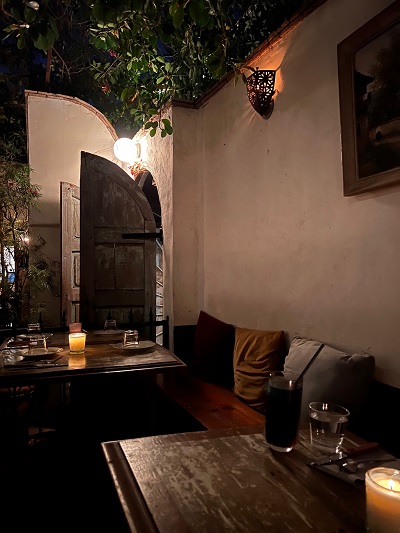 After a wonderful dinner at Bacari under the open sky, in the walled patio, we began to walk back to the car. Two heavily armed men wearing bulletproof vests were standing in front of a store. It did not look like a jewellery store, so I asked one of the men what was inside. He said it was a medical dispensary, which I found out is modern coinage for a place that legally sells weed, or marijuana.
After a wonderful dinner at Bacari under the open sky, in the walled patio, we began to walk back to the car. Two heavily armed men wearing bulletproof vests were standing in front of a store. It did not look like a jewellery store, so I asked one of the men what was inside. He said it was a medical dispensary, which I found out is modern coinage for a place that legally sells weed, or marijuana.
We were in LA when California was experiencing a heat wave. Every day we would get “Flex Alerts” via text from the power system operator asking us to conserve power between 4 and 9 pm to avoid precipitating a “rotating outage.” Being in a hotel, there was not much we could do since we were not in our room during those hours.
One day, around 6 pm, we were buzzed on our cell phones with an “Amber Alert,” which is usually associated with a kidnapping alert. The government was telling us to power down. Of course, we were in a car and could not do much other than listen to the noise. Everywhere we went, from stores to restaurants to hotels, they were running their air conditioners at full blast.
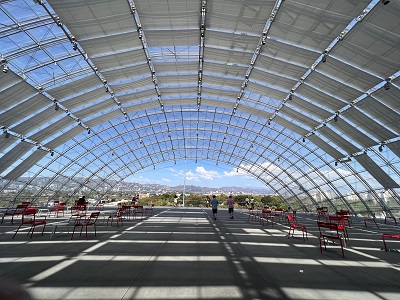 At the end of our visit, we took an Uber to the airport. Our driver was a native of Iran who had spent a few years there during the early years of the Ayatollahs’ rule. He did not have anything good to say about the living conditions back home. He’s one of many Iranians living in LA, a town they call Teherangeles because it reminds them of Tehran.
At the end of our visit, we took an Uber to the airport. Our driver was a native of Iran who had spent a few years there during the early years of the Ayatollahs’ rule. He did not have anything good to say about the living conditions back home. He’s one of many Iranians living in LA, a town they call Teherangeles because it reminds them of Tehran.
In San Francisco, the Uber driver was from the Philippines. We chatted about the new president, who is the son of Ferdinand Marcos. He gave us some tips on when to visit and what to see. I had been there twice in the late 1990s on business and had done some limited sightseeing around Manila.
All in all, this was a wonderful trip. We saw a side of LA we had not seen before and even learned a few things about Iran and the Philippines. We returned home with some wonderful memories.

And during my trip to LA in 2003, I had attended not one but two functions at which Pervez Musharraf spoke. The first function was a breakfast with American businessmen at a fancy hotel located off the Avenue of the Stars, where he made an appeal for investing in Pakistan. The second was a dinner with some 500 Pakistani couples in the swank Beverly Hills Hotel where he tried to convince the room that he was the best thing that ever happened to Pakistan since Jinnah.
On this trip, I did something totally different and stayed at a two-story boutique hotel in Beverly Hills. We visited three of the top five museums in the city: the Los Angeles County Museum of Art, LACMA, the Academy Museum, and the Getty Center.
At the entrance to LACMA there is a collection of some 200 really old cast-iron street lamps. Once upon a time, they must have been located all around town. Restored to working order, they now stood next to each other. The collection, called “Urban Light,” is one of LA’s prominent landmarks. It is lit up at night.
 Inside, we discovered a wide range of modernist masterpieces, large-scale sculptures, and traditional Japanese screens. There was an impressive collection of Spanish American art from the 1500-1800 period. Some of the paintings had a distinctive religious theme. In particular, one stood out. This was a monumental painting by the Bolivian painter Melchor Perez Holguin, entitled the “Golden Brush.” It invokes piety as it depicts Christ after the crucifixion.
Inside, we discovered a wide range of modernist masterpieces, large-scale sculptures, and traditional Japanese screens. There was an impressive collection of Spanish American art from the 1500-1800 period. Some of the paintings had a distinctive religious theme. In particular, one stood out. This was a monumental painting by the Bolivian painter Melchor Perez Holguin, entitled the “Golden Brush.” It invokes piety as it depicts Christ after the crucifixion.The Academy is adjacent to LACMA. It has several floors of exhibits, featuring objects from iconic films such as Crouching Tiger, Hidden Dragon; Jaws; Star Wars; Terminator; and the Wizard of Oz. In several rooms, you can watch clips from selected movies. You can also actually hold an Oscar.
In one room, they show you how stunts are performed. Earlier, in one of those coincidences that come rarely in life, we were checking out a cottage in West Hollywood when the owner introduced himself as a “stunt double.” He was tall, sturdy and agile. I could easily see him performing those roles.
The Getty Center is not the easiest place to get to. It sits atop a mountain. After we had parked, we took a train. As we emerged from the train, we saw a remarkable complex of travertine and white-clad pavilions. They housed the collections.
The collections included ornate French furniture, mannequins featuring fashions from several continents – including women in Western attire featuring the Turkish flag – and a wide array of paintings. As we came out of the buildings, truly amazing gardens with mazes, canals and fountains swung into view. Blooms of different colour added nuance, texture, depth and intrigue.
The Getty Center also provides an unexpected bonus: a 360-degree view of the hills, the ocean, and downtown LA. In the distance looms a multi-lane freeway, looking like a dynamic work of art with traffic moving slowly in both directions.

On the third day, we spent time admiring the beach at Santa Monica. In the distance, on a pier, kids were enjoying all types of rides, taking us down memory lane.
During the three days, we made time to savour some fine cuisine in Santa Monica, West Hollywood and Beverly Hills. No visit to LA would be complete without visiting at least one shopping mall. We went to one open-air mall, The Grove, which also gave us an opportunity to have dinner besides a lit-up fountain.
We also drove past the beautiful University of California Los Angeles (UCLA) campus. We had visited this several times in the past when one of our daughters was studying there.
One evening, as we were walking toward a restaurant, I spotted a billboard sign: “Chances are you need WEED right now.” Wow! What was that all about?
 After a wonderful dinner at Bacari under the open sky, in the walled patio, we began to walk back to the car. Two heavily armed men wearing bulletproof vests were standing in front of a store. It did not look like a jewellery store, so I asked one of the men what was inside. He said it was a medical dispensary, which I found out is modern coinage for a place that legally sells weed, or marijuana.
After a wonderful dinner at Bacari under the open sky, in the walled patio, we began to walk back to the car. Two heavily armed men wearing bulletproof vests were standing in front of a store. It did not look like a jewellery store, so I asked one of the men what was inside. He said it was a medical dispensary, which I found out is modern coinage for a place that legally sells weed, or marijuana.We were in LA when California was experiencing a heat wave. Every day we would get “Flex Alerts” via text from the power system operator asking us to conserve power between 4 and 9 pm to avoid precipitating a “rotating outage.” Being in a hotel, there was not much we could do since we were not in our room during those hours.
One day, around 6 pm, we were buzzed on our cell phones with an “Amber Alert,” which is usually associated with a kidnapping alert. The government was telling us to power down. Of course, we were in a car and could not do much other than listen to the noise. Everywhere we went, from stores to restaurants to hotels, they were running their air conditioners at full blast.
 At the end of our visit, we took an Uber to the airport. Our driver was a native of Iran who had spent a few years there during the early years of the Ayatollahs’ rule. He did not have anything good to say about the living conditions back home. He’s one of many Iranians living in LA, a town they call Teherangeles because it reminds them of Tehran.
At the end of our visit, we took an Uber to the airport. Our driver was a native of Iran who had spent a few years there during the early years of the Ayatollahs’ rule. He did not have anything good to say about the living conditions back home. He’s one of many Iranians living in LA, a town they call Teherangeles because it reminds them of Tehran.In San Francisco, the Uber driver was from the Philippines. We chatted about the new president, who is the son of Ferdinand Marcos. He gave us some tips on when to visit and what to see. I had been there twice in the late 1990s on business and had done some limited sightseeing around Manila.
All in all, this was a wonderful trip. We saw a side of LA we had not seen before and even learned a few things about Iran and the Philippines. We returned home with some wonderful memories.

